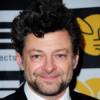Andy Serkis

Andy Serkis
Andrew Clement "Andy" Serkisis an English film actor, director and author. He is best known for his performance capture roles comprising motion capture acting, animation and voice work for such computer-generated characters as Gollum in The Lord of the Rings film trilogyand The Hobbit: An Unexpected Journey, the eponymous King Kong in the 2005 film, Caesar in Riseand Dawn of the Planet of the Apes, Captain Haddock / Sir Francis Haddock in Steven Spielberg's The Adventures of Tintinand Supreme Leader...
NationalityEnglish
ProfessionMovie Actor
Date of Birth20 April 1964
CityLondon, England
Everybody thinks performance capture is about thrashing around and doing a lots of movement, but it's actually about being able to contain and think and be believed in a close-up, as much as anything else.
When you start to do research into gorillas or any kind of apes, if you're going to play them, that's one of the biggest misconceptions. And when I did Kong, you're not doing gorilla movements, you're not doing ape movements, you're looking for a personality. It's like saying okay I'm going to do human movements.
After 'Kong,' my knuckles have never recovered because I had to wear very heavy weights on my forearms and around my hips and ankles to get the sense of size and scale of the movement of the character You are telling your body that you are these things and that you're feeling these thoughts and that you're experiencing these experiences.
People used to say, 'Andy Serkis lent his movements to Gollum,' and now they say, 'Andy Serkis played Caesar.' That's a significant leap.
The thing is, I don't just take roles because they're performance capture.
If James Franco's wearing a costume, and I'm wearing a motion capture suit, we don't act any differently with each other because of what we're wearing. We're embodying our roles.
I had to relearn how to ride a horse like an ape. I had to change how I jumped off and how I gripped them with my thighs and distribute my weight differently.
I've done a lot of films that are purely live-action roles, and even if I hadn't come across performance capture as a technology, I think I'd always consider myself a sort of mercurial actor.
The voice he created for character was so perfect. The character was quite scary and the voice was quite scary at times.
What's fantastic is that there's a real growing appreciation for performance-capture technology as a tool for acting.
This was absolutely, really needed because we were doing really badly this year.
Every single frame has got something going on in the background; in many ways, it's an embarrassment of riches. I guess some of the New York scenes, especially in the third act when Kong is back. Some of that rampage stuff, with the people running down the street and all the shop signs and all the neon that just goes on for miles. Those big aerial shots in New York that completely faithfully re-create New York at the time. That's pretty special stuff.
As I started to research gorillas, I began to understand that they're all totally individual and idiosyncratic, and they have their own personalities.
I spent a lot of time on my own working out the physical vocabulary for how Gollum moved. As I say, I drew on a lot of Tolkein's descriptions of how he moves, but also the conceptual artist sketches.